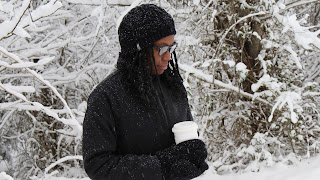The Fascinating World of Mushrooms: Common Types found in North Carolina
The Fascinating World of Mushrooms
Mushroom hunting has become increasingly popular in recent years. And many people, like me, want to learn how to identify them. In this blog post, we will explore the different types of mushrooms, and tips for safely observing and photographing mushrooms.
Mushrooms are a type of fungus that come in a variety of shapes, sizes, and colors. They are typically found in wooded areas, but can also be found in grasslands and even deserts. One of the most distinctive features of mushrooms is their cap, which can range in size from just a few millimeters to over a foot in diameter. The stem of a mushroom is another important feature, and can range from very thin and delicate to thick and sturdy.Another important feature of mushrooms is their gills, which are located on the underside of the cap. The color and spacing of the gills can vary greatly between different types of mushrooms. Some mushrooms also have distinctive spore prints, which can be used to identify them, as their color, and shape.
Some common types of mushrooms found while hiking in North Carolina include:
- Chanterelle: These mushrooms are golden or yellow in color, with a funnel-shaped cap and ridges instead of gills. They have a fruity, apricot-like aroma and a mild, earthy flavor. They are often found in forests near hardwood trees.
- Hen of the Woods: Also known as maitake, these mushrooms grow in large clusters at the base of hardwood trees. They have a frilly appearance and a distinctive aroma. They are often used in Asian cuisine for their umami flavor.
- Morel: These mushrooms have a distinctive honeycomb-like cap and a nutty, meaty flavor. They are typically found in wooded areas in the spring. They have a distinctive honeycomb-like appearance and are highly prized by mushroom hunters.
- Oyster Mushroom: These mushrooms have a fan-like cap and are typically gray, white, or yellow in color. They have a delicate, slightly sweet flavor and are often used in stir-fries and soups.
- Shaggy Mane: These mushrooms have a tall, shaggy cap and gills that turn black as the mushroom matures. They have a delicate flavor and are often used in sauces and soups.
- Chicken of the Woods: These mushrooms have a bright orange or yellow color and grow in large clusters on the trunk or branches of hardwood trees. They have a meaty texture and a slightly sweet, nutty flavor.
- Black Trumpet: These mushrooms have a funnel-shaped cap and are typically black or dark brown in color. They have a rich, smoky flavor and are often used in sauces and soups.
- Lion's Mane: These mushrooms have a shaggy appearance and a texture similar to crab or lobster meat. They have a sweet, nutty flavor and are often used as a meat substitute in vegetarian dishes.
- Boletus: These mushrooms have a thick stem and a cap that ranges in color from brown to red. They have a mild, nutty flavor and are often used in soups and stews.
- Coral Mushroom: These mushrooms have a distinctive coral-like appearance and a delicate, slightly nutty flavor.
Tips for Safely observing.
Mushroom exploration can be a fun and rewarding experience, but it is important for new explorers to take caution when identifying and consuming mushrooms. Some mushrooms can be toxic and even deadly if consumed, so it is crucial to be able to distinguish between edible mushrooms and lookalikes. It is highly recommended to find a verified forager who knows the area well and can guide you in identifying the mushrooms correctly. They can also provide valuable information on the best ways to prepare and cook the mushrooms.
When observing and photographing mushrooms, it is important to do so without causing any harm to the mushrooms or their habitat. This means staying on designated trails, not touching or picking the mushrooms, and taking care not to disturb their surroundings. Using a macro lens can allow you to capture the intricate details of the mushroom without causing any damage. Additionally, using a shallow depth of field can help to blur the background and draw attention to the mushroom's features, while natural light can highlight their colors and textures.
Here are some of my captures.
Mushrooms are a fascinating and important part of the natural world. We encourage readers to share their own mushroom sightings, identifying and stories in the comments section. Remember to always observe and photograph mushrooms safely and respectfully. To learn more about mushrooms, check out the book “Mushrooms Demystified” by David Arora. Thank you for reading and appreciating the beauty and importance of mushrooms in nature.
You can buy the book "Mushrooms Demystified" by David Arora from this link: https://a.co/d/7CqGGeV
Disclaimer : I’m not an expert mushroom identifier. I just like to explore and I’m learning as I go. Remember, only go with an experienced forager if you plan on enjoying your mushrooms! ✌🏾








Comments
Post a Comment